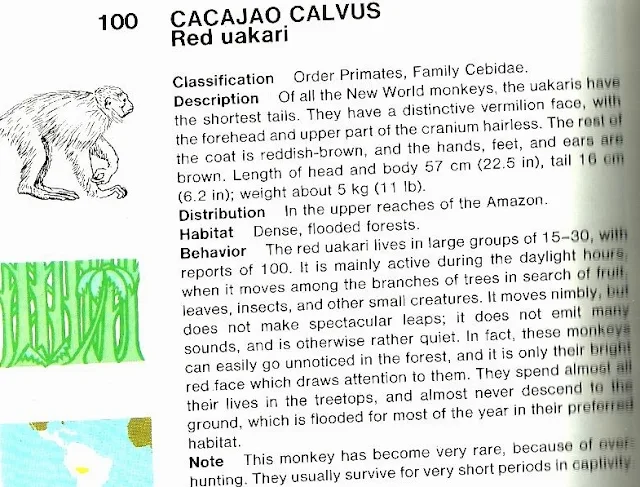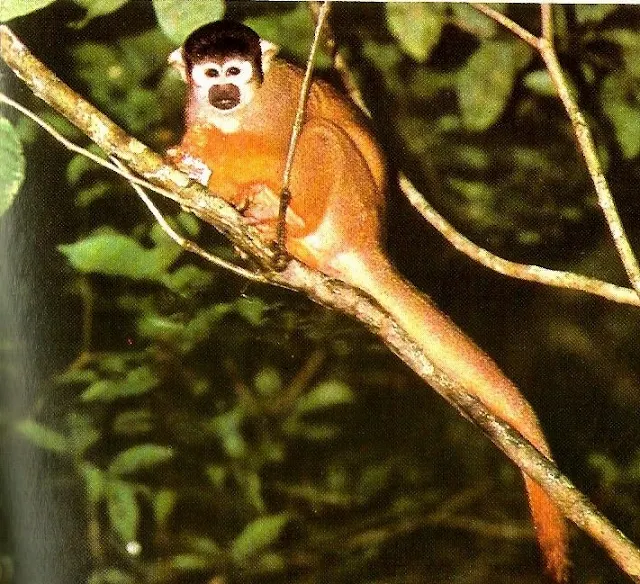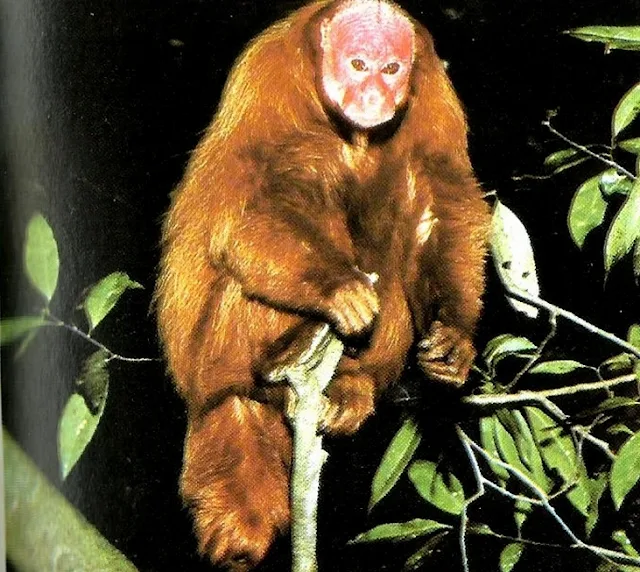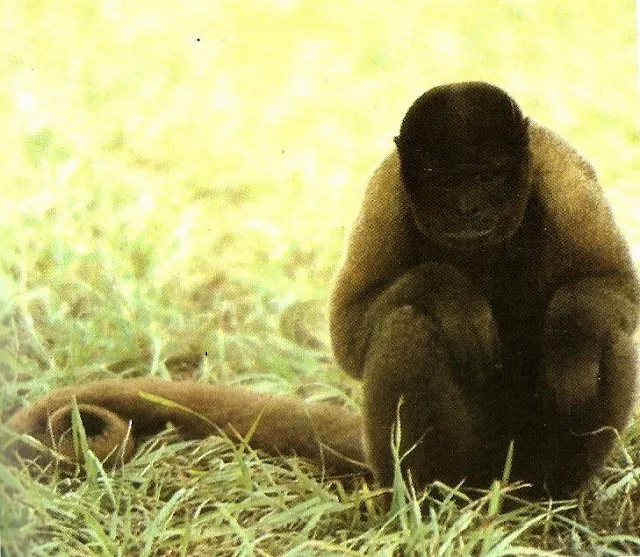A primate:
which contains prosimians and simians.Primates arose from ancestors that lived in the trees of tropical forests; many primate characteristics represent adaptations to life in this challenging three-dimensional environment. All but a few primate species remain at least partly arboreal.
With the exception of humans, who inhabit every continent, most primates live in tropical or subtropical regions of the Americas, Africa and Asia. Primates range in size from Madame Berthe's mouse lemur, which weighs only 30 grams (1 oz), to the mountain gorilla, weighing 200 kilograms (440 lb). According to fossil evidence, the primitive ancestors of primates may have existed in the late Cretaceous period around 65 million years ago; the oldest known primate is the Late Paleocene Plesiadapis, c. 55–58 million years ago. Molecular clock studies suggest that the primate branch may be even older, originating in the mid-Cretaceous period around 85 mya.
Order Primates has traditionally been divided into two main groupings: prosimians and anthropoids (simians). Prosimians have characteristics more like those of the earliest primates, and include the lemurs of Madagascar, lorisiforms and tarsiers. Simians include the monkeys, apes and humans. More recently, taxonomists have preferred to split primates into the suborder Strepsirrhini, or curly-nosed primates, consisting of non-tarsier prosimians, and the suborder Haplorhini, or dry-nosed primates, consisting of tarsiers and the simians. Simians are divided into two groups: platyrrhine ("flat nosed") or New World monkeys of South and Central America and catarrhine (narrow nosed) monkeys and apes of Africa and southeastern Asia. New World monkeys include the capuchin, howler and squirrel monkeys; catarrhines consist of Old World monkeys (such as baboons and macaques), gibbons and great apes. Humans are the only extant catarrhines that have spread successfully outside of Africa, South Asia, and East Asia, although fossil evidence shows many other species were formerly present in Europe. Several primates have been discovered in the 2000s.
Considered generalist mammals, primates exhibit a wide range of characteristics. Some primates (including some great apes and baboons) are primarily terrestrial rather than arboreal, but all species possess adaptations for climbing trees. Locomotion techniques used include leaping from tree to tree, walking on two or four limbs, knuckle-walking, and swinging between branches of trees (known as brachiation). Primates are characterized by large brains relative to other mammals, as well as an increased reliance on stereoscopic vision at the expense of smell, the dominant sensory system in most mammals. These features are more developed in monkeys and apes and noticeably less so in lorises and lemurs. Three-color vision has developed in some primates. Most also have opposable thumbs and some have prehensile tails. Many species are sexually dimorphic; differences include body mass, canine tooth size, and coloration. Primates have slower rates of development than other similarly sized mammals and reach maturity later but have longer lifespans. Depending on the species, adults may live in solitude, in mated pairs, or in groups of up to hundreds of members.
Some Unique Monkeys Of The World:








which contains prosimians and simians.Primates arose from ancestors that lived in the trees of tropical forests; many primate characteristics represent adaptations to life in this challenging three-dimensional environment. All but a few primate species remain at least partly arboreal.
With the exception of humans, who inhabit every continent, most primates live in tropical or subtropical regions of the Americas, Africa and Asia. Primates range in size from Madame Berthe's mouse lemur, which weighs only 30 grams (1 oz), to the mountain gorilla, weighing 200 kilograms (440 lb). According to fossil evidence, the primitive ancestors of primates may have existed in the late Cretaceous period around 65 million years ago; the oldest known primate is the Late Paleocene Plesiadapis, c. 55–58 million years ago. Molecular clock studies suggest that the primate branch may be even older, originating in the mid-Cretaceous period around 85 mya.
Order Primates has traditionally been divided into two main groupings: prosimians and anthropoids (simians). Prosimians have characteristics more like those of the earliest primates, and include the lemurs of Madagascar, lorisiforms and tarsiers. Simians include the monkeys, apes and humans. More recently, taxonomists have preferred to split primates into the suborder Strepsirrhini, or curly-nosed primates, consisting of non-tarsier prosimians, and the suborder Haplorhini, or dry-nosed primates, consisting of tarsiers and the simians. Simians are divided into two groups: platyrrhine ("flat nosed") or New World monkeys of South and Central America and catarrhine (narrow nosed) monkeys and apes of Africa and southeastern Asia. New World monkeys include the capuchin, howler and squirrel monkeys; catarrhines consist of Old World monkeys (such as baboons and macaques), gibbons and great apes. Humans are the only extant catarrhines that have spread successfully outside of Africa, South Asia, and East Asia, although fossil evidence shows many other species were formerly present in Europe. Several primates have been discovered in the 2000s.
Considered generalist mammals, primates exhibit a wide range of characteristics. Some primates (including some great apes and baboons) are primarily terrestrial rather than arboreal, but all species possess adaptations for climbing trees. Locomotion techniques used include leaping from tree to tree, walking on two or four limbs, knuckle-walking, and swinging between branches of trees (known as brachiation). Primates are characterized by large brains relative to other mammals, as well as an increased reliance on stereoscopic vision at the expense of smell, the dominant sensory system in most mammals. These features are more developed in monkeys and apes and noticeably less so in lorises and lemurs. Three-color vision has developed in some primates. Most also have opposable thumbs and some have prehensile tails. Many species are sexually dimorphic; differences include body mass, canine tooth size, and coloration. Primates have slower rates of development than other similarly sized mammals and reach maturity later but have longer lifespans. Depending on the species, adults may live in solitude, in mated pairs, or in groups of up to hundreds of members.
 |
| Mandrill |

 |
| Gelada Baboon |

 |
| Golden Lion Marmoset |

 |
| Proboscis Monkey |

 |
| Black Handed Spider Monkey |

 |
| Common Squirrel Monkey |

 |
| Red Uakari |

 |
| Woolly Monkey |

























 Online Movies
Online Movies
No comments:
Post a Comment